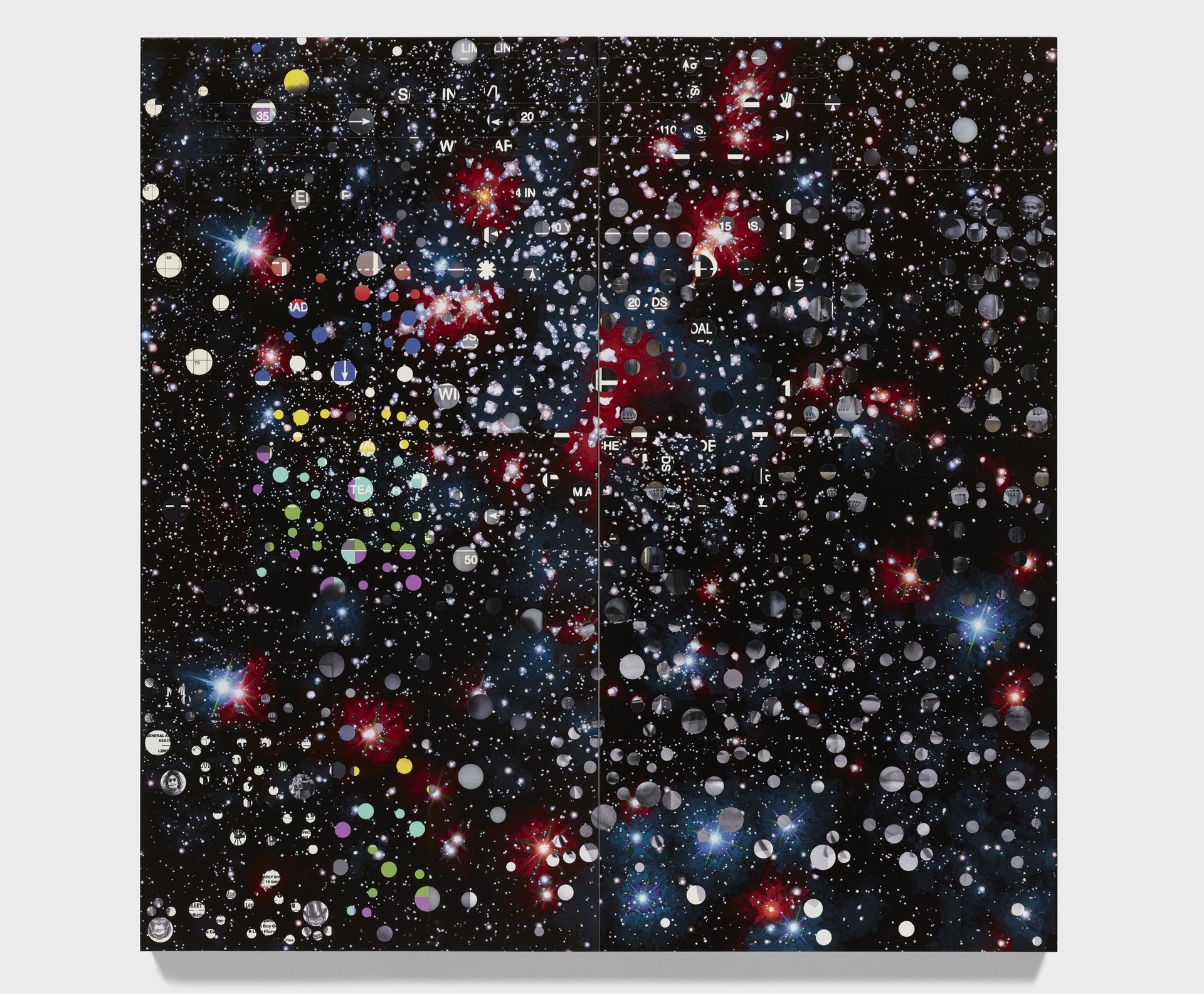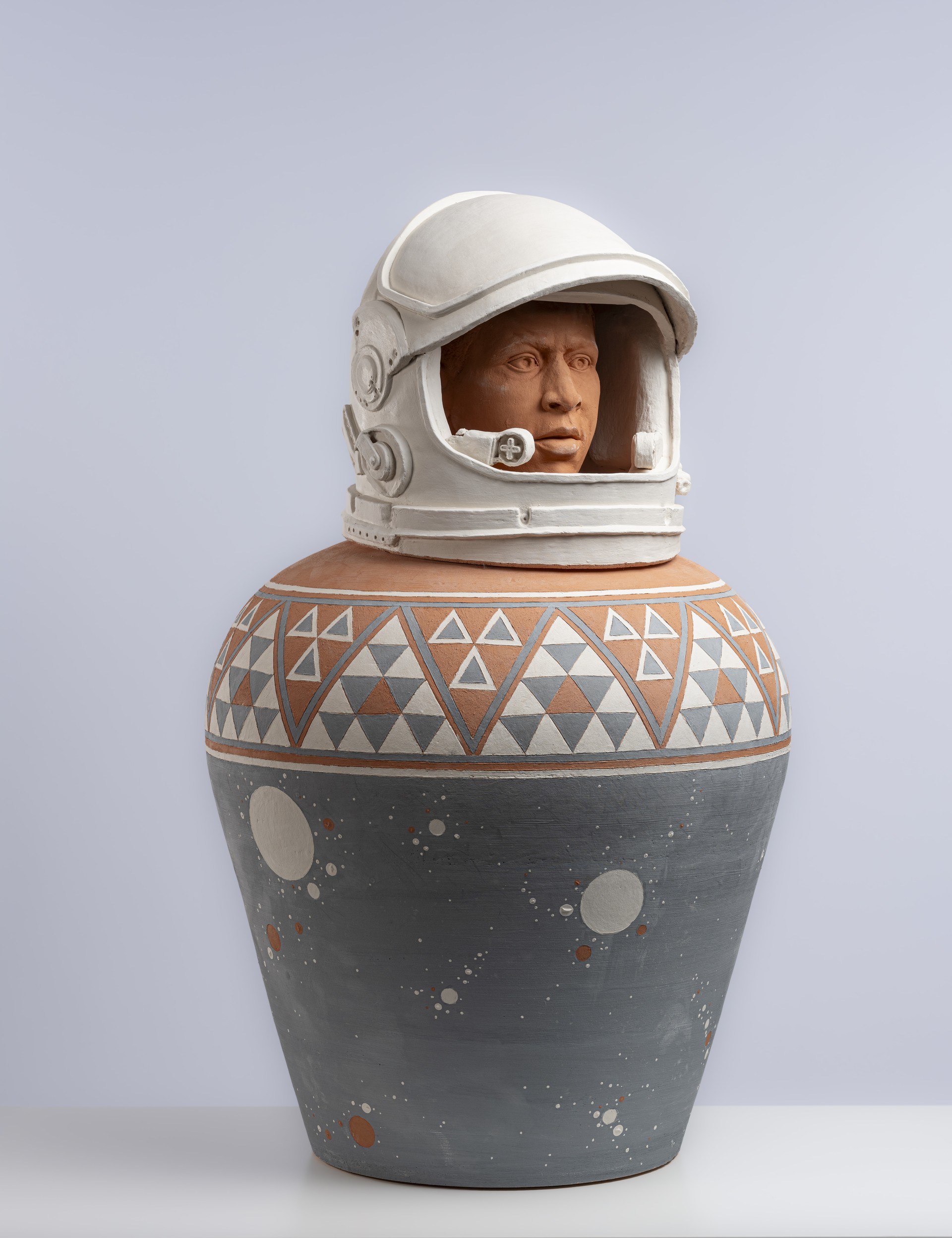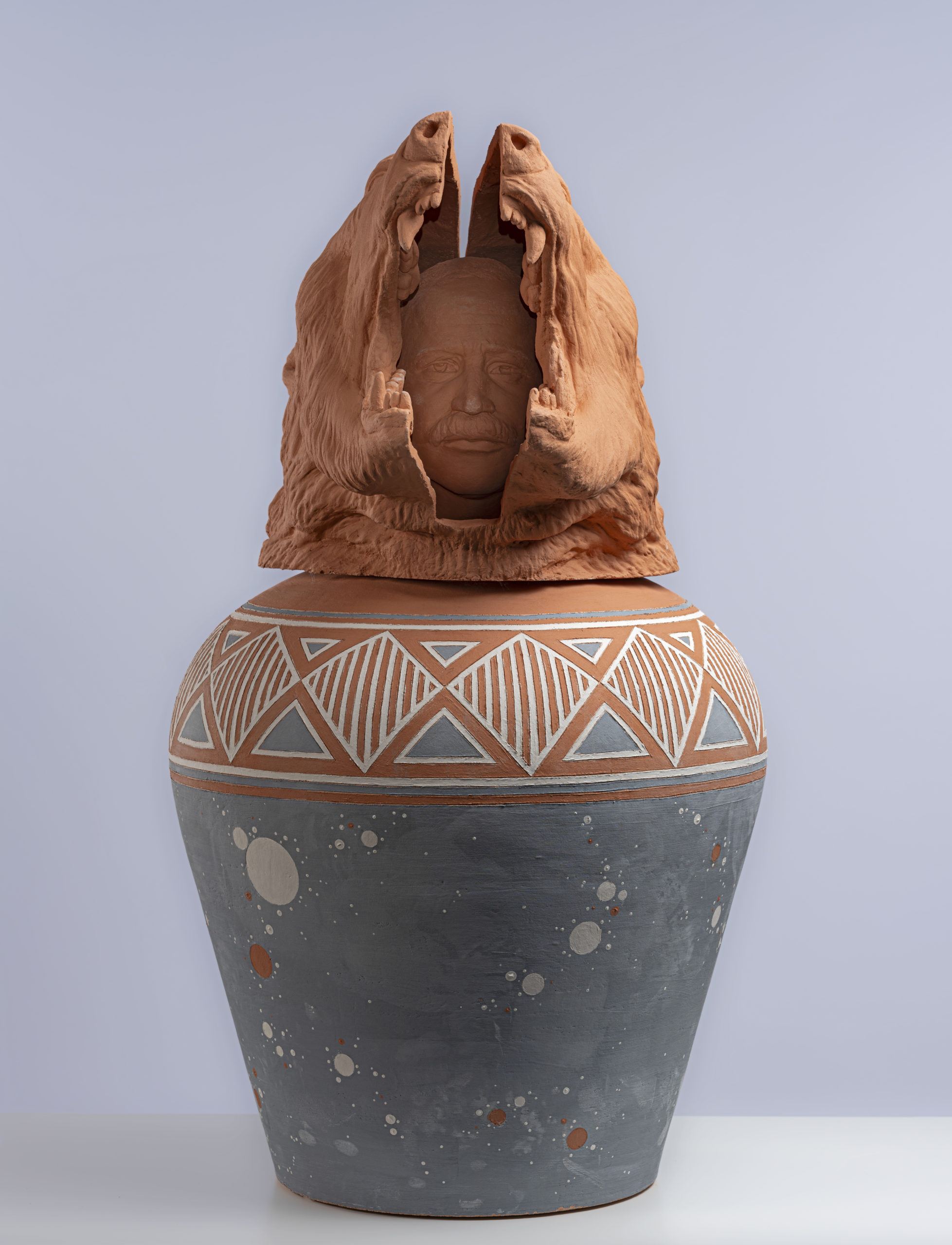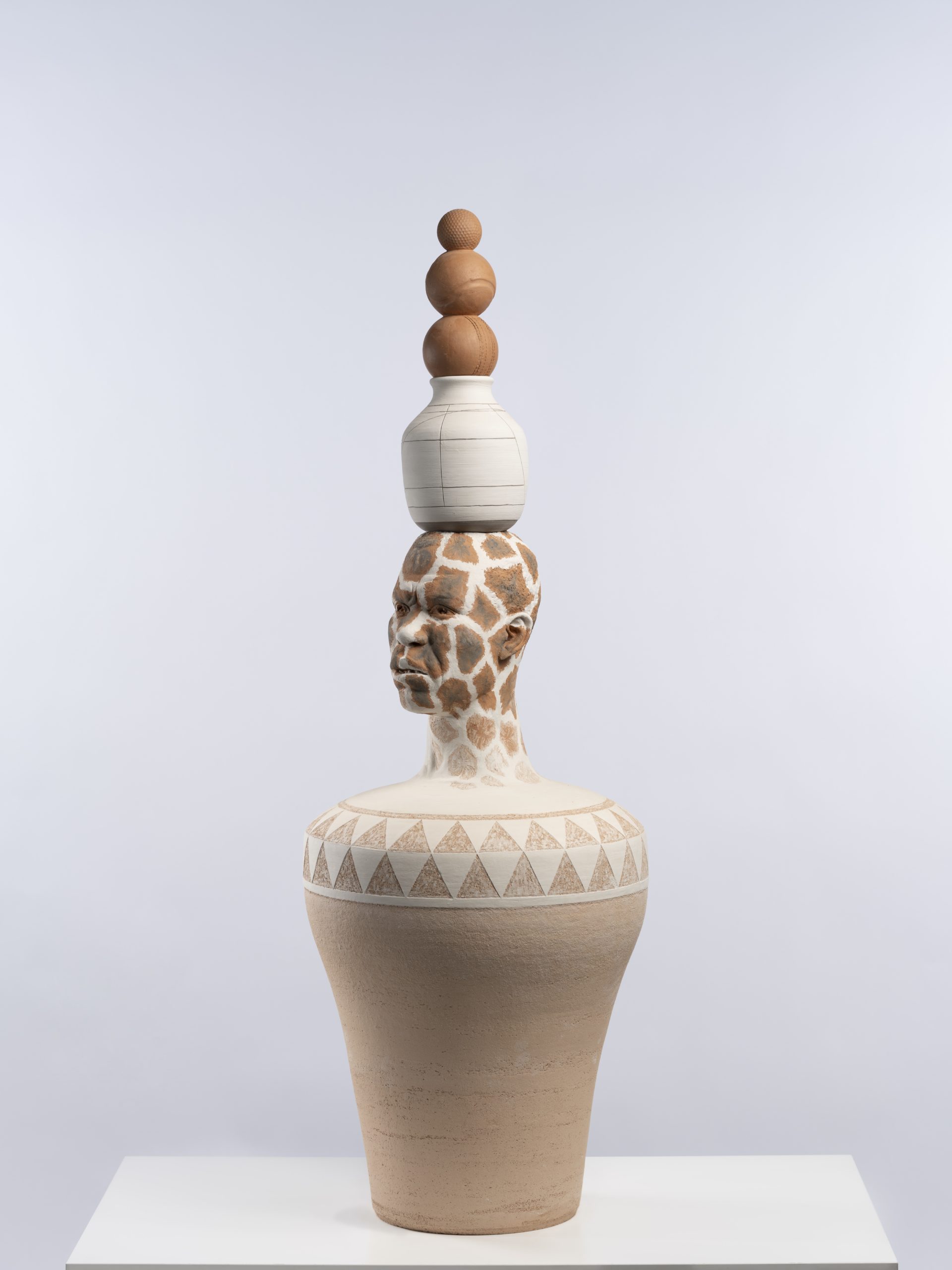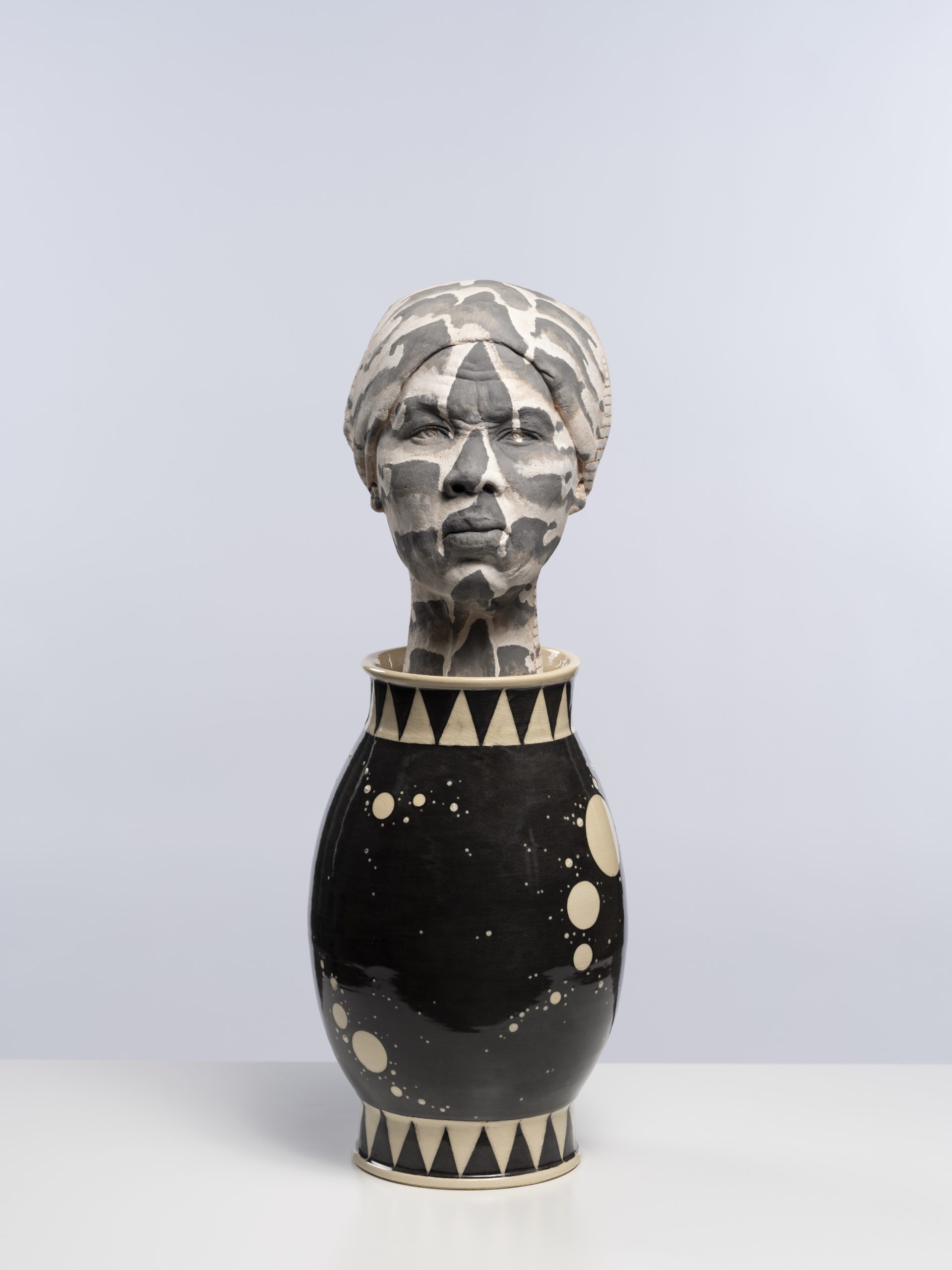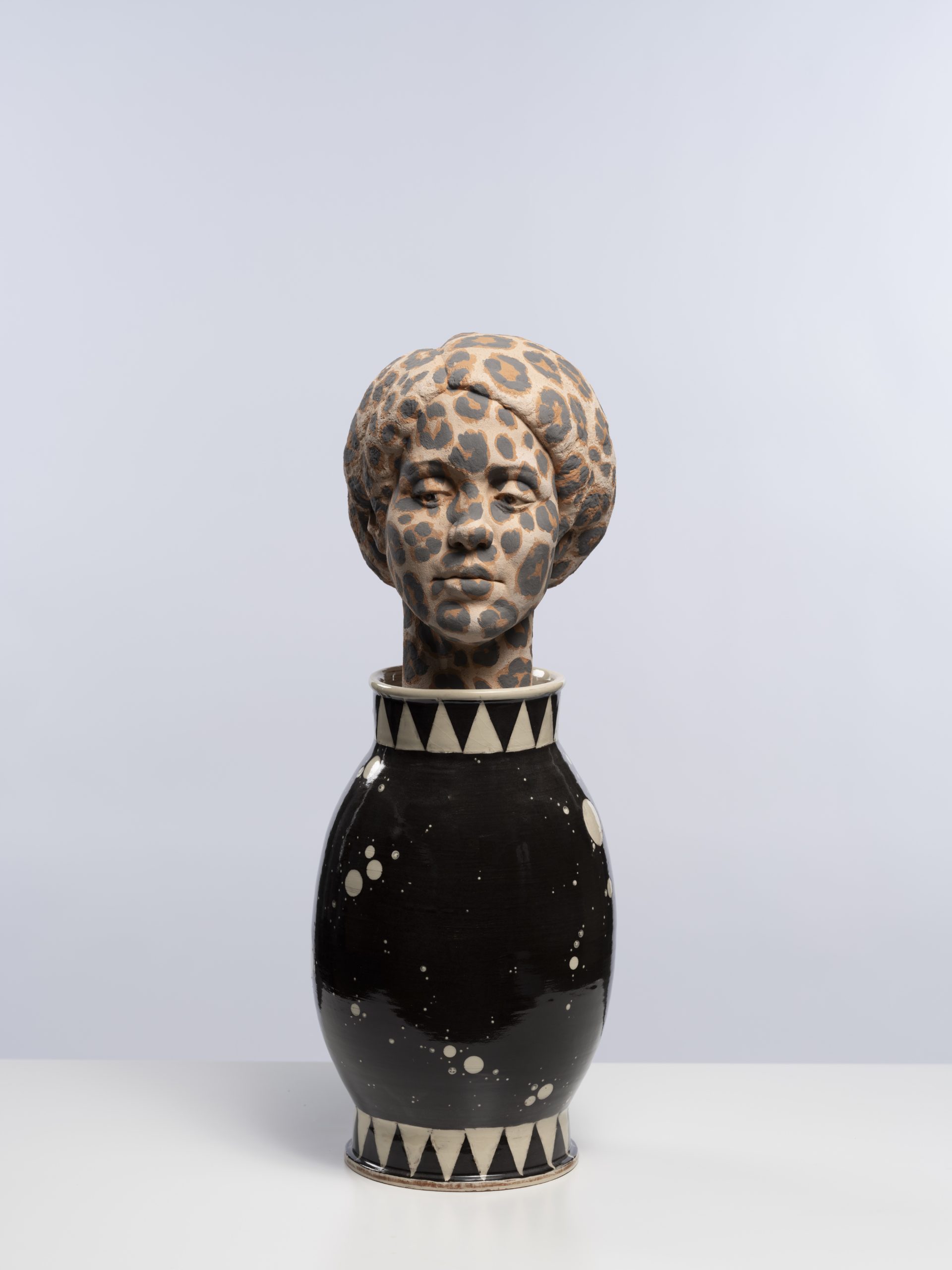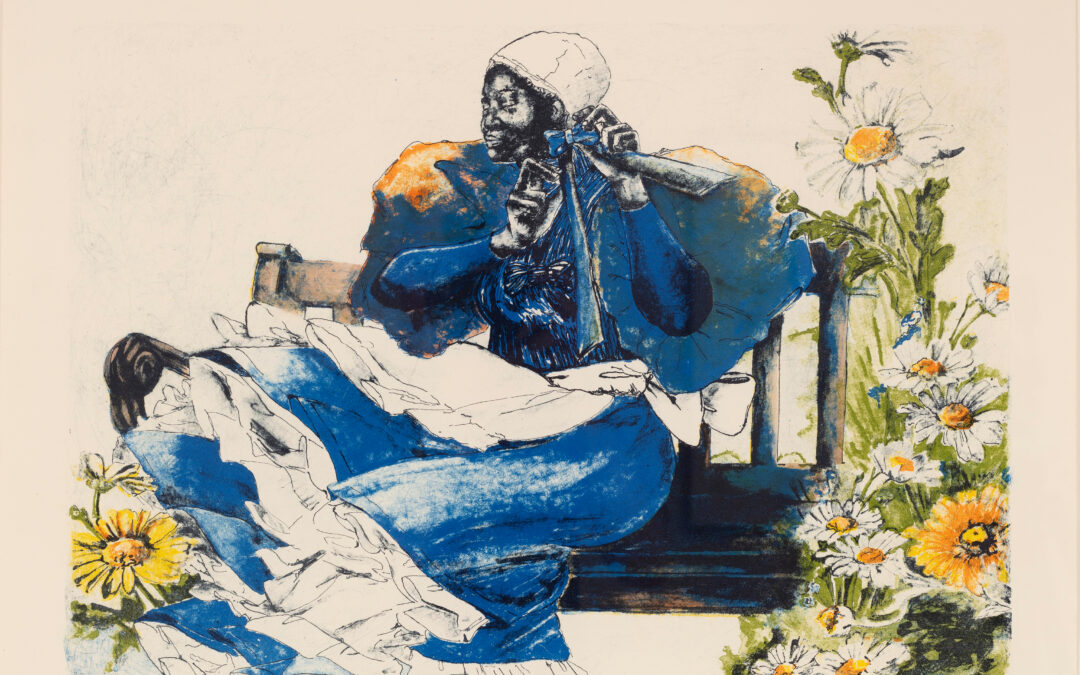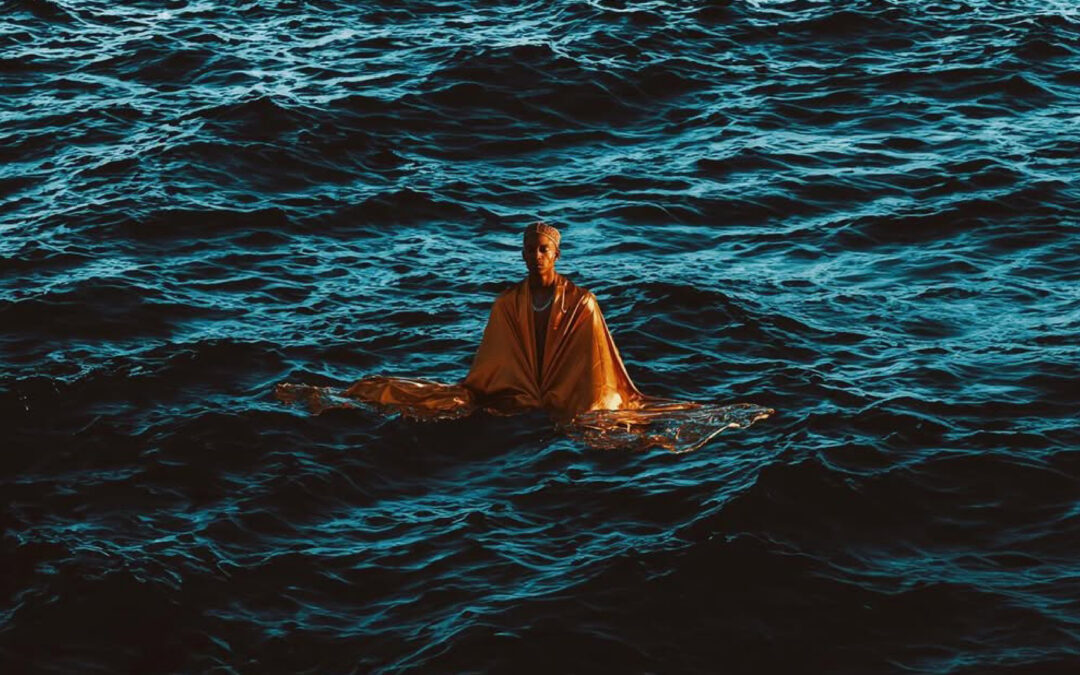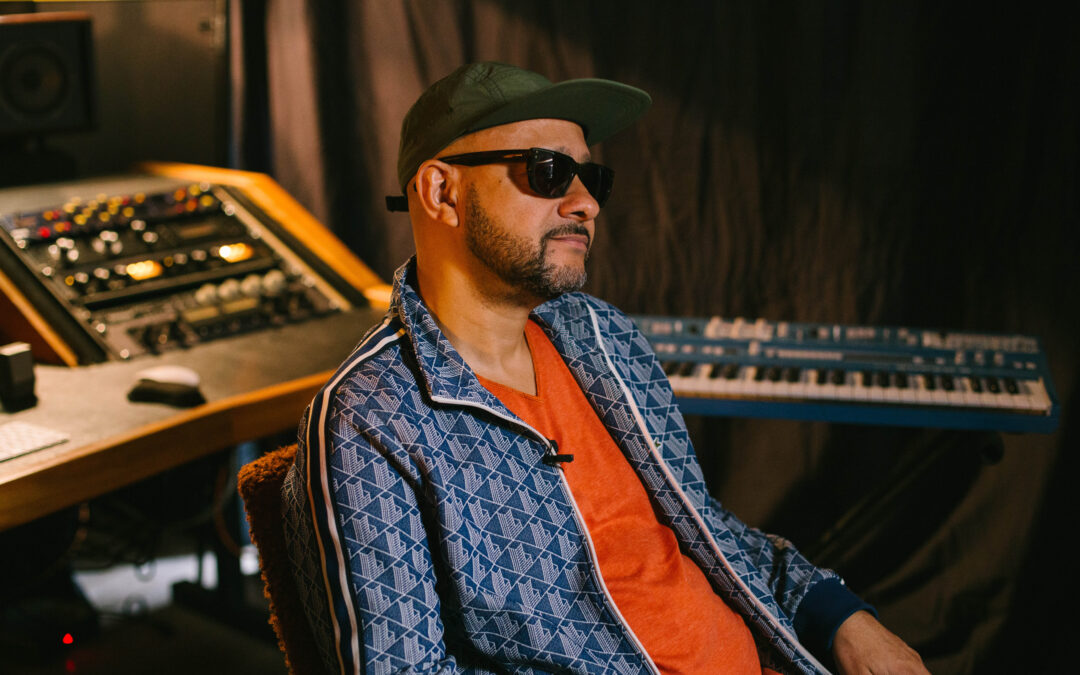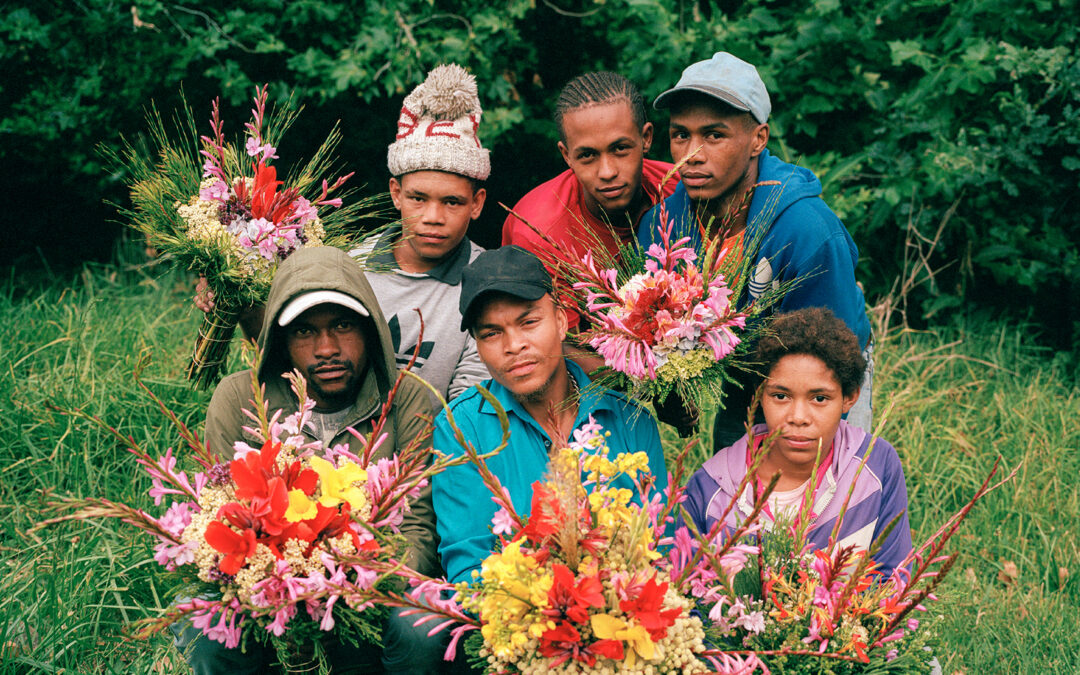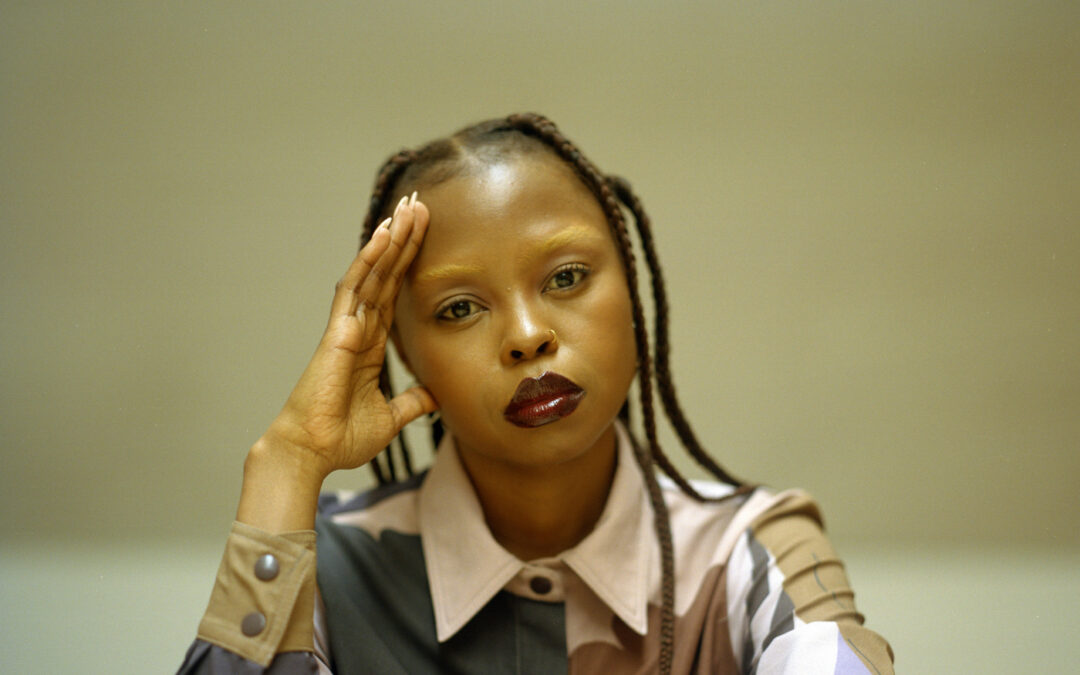‘Goodman Gallery presents The Return, the first solo exhibition on the African continent for Nassau-born, New York-based interdisciplinary conceptual artist Tavares Strachan. The show includes ceramics, which are being displayed in an exhibition context for the first time, as well as new paintings and locally created, handwoven tapestries – all of which have been made specifically for this presentation.’ – press release, Goodman Gallery.
Nassau-born, New York-based interdisciplinary conceptual artist, Tavares Strachan, focuses on a myriad of threads to encompass his work. Suffusing art, technology, science, cultural and historical orientations through multiple mediums such as installation, performance, sculpture, photography and more; Strachan’s is a vision upheld on the mantle of the innate complexity within the human and planetary experience, denoting an artistic practice of cosmic proportions.
Strachan’s notable works include “The Distance Between What We Have and What We Want (Arctic Ice Project).” In this ongoing project, Strachan (as the first Bahamian to visit the North Pole) extracted a 4.5 ton piece of Arctic ice and transported it to the Bahamas, laid out for stark display as a sculpture. This installation continues invite a conversation about climate change and the fragility of Earth’s ecosystems, of which we, as humanity, are the guardians – and which Strachan used as a centrepiece in his ongoing inquiry into the nature of being human, endowed with cognition of our actions and consequences. In addition, Strachan infamously partnered with a variety of scientific institutions and notably, a collaboration with SpaceX engineers saw the launch of a sculpture into space, named ENOCH, “centred around the development and launch of a 3U satellite that brings to light the forgotten story of Robert Henry Lawrence Jr., the first African American astronaut selected for any national space program.”
For his first show in South Africa, Strachan presents ‘The Return’ with Goodman Gallery. One needs to book to view the show, and Goodman describes “Central to the show is The Encyclopedia of Invisibility- a fifteen-year-long project resulting in an ongoing anthology of hidden stories that have been left out of history. This work anchors his thematic and material voyages, emphasising the necessity for articulating multiple histories, and how power operates in the production and recording of a singular narration of history. The artist’s tapestries use text and subject matter from The Encyclopedia of Invisibility, weaving layered references together to explore an expanded visual enunciation of historical accounts,mapping out temporal and political connections.”
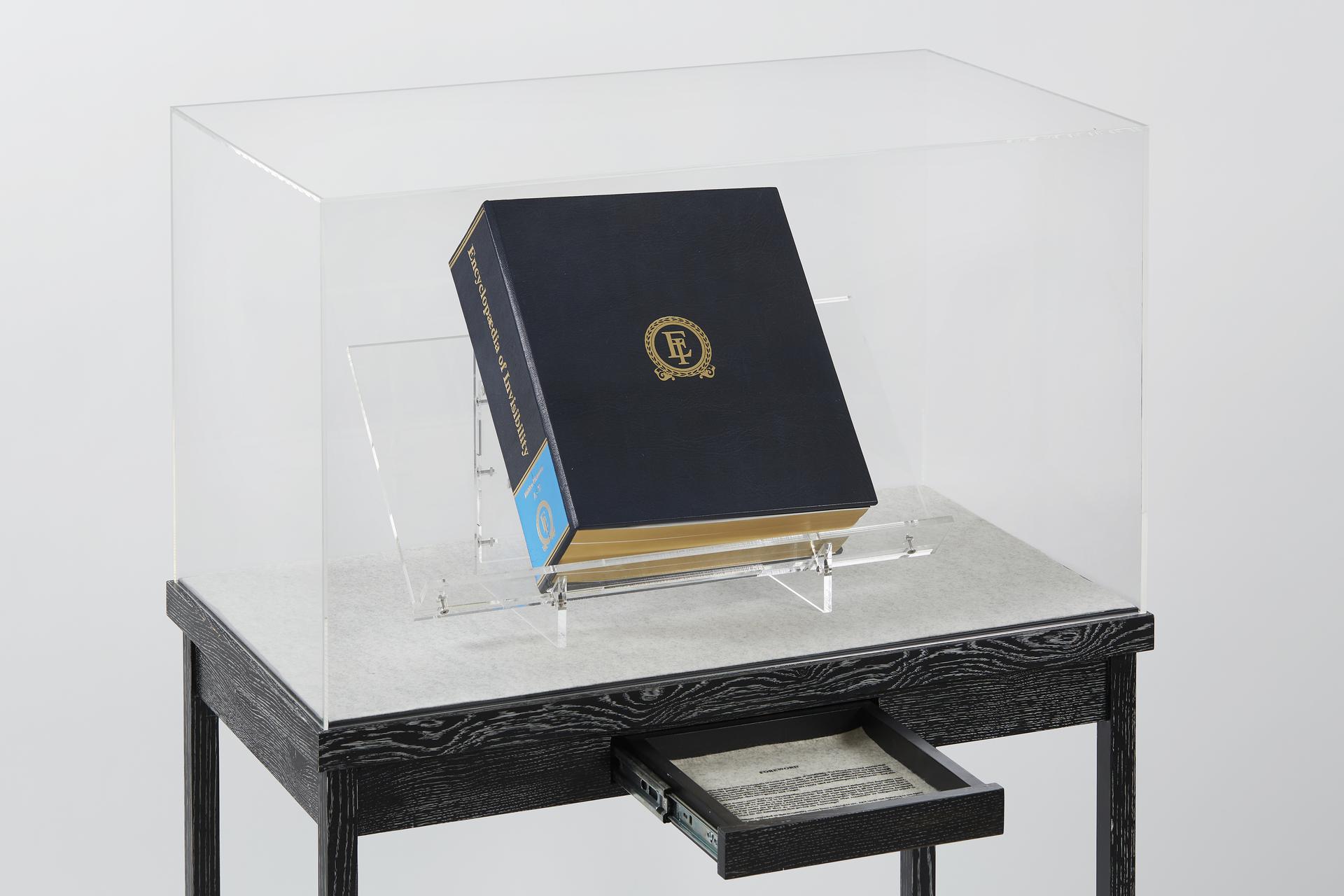
Encyclopedia of Invisibility (Black)
The Return (Children’s History Invisibility) & Unsustainable Kindness, Unspeakable Joy, Uncontrollable Calm, Uncontainable Exultation.
We spoke to Tavares Strachan about his practice and the show;
Your upcoming exhibition “The Return” focuses on the concept of returning to one’s place of origin. How do you believe this exploration of origin impacts our understanding of the human experience and history?
Tavares: It’s really astonishing how fascinated humans have been with origin stories. So much of the philosophies of science and religion begin with this very question of where we come from. For me the fact that all humans evolved from Africa centralises the content in a way that it was never taught to me in my schools growing up. It’s good to acknowledge the place where it all began.
The Encyclopedia of Invisibility is a remarkable project that aims to bring hidden stories to light. How do you see the act of reclaiming these stories as a challenge to conventional historical narratives and the power structures that shape them?
Tavares: I love stories. The thing is History belongs to all of us. The idea that any one group can own history is wild. When I made the encyclopaedia I was into the idea of finding missing parts of history and putting them all in one place.
Your multidisciplinary approach encompasses art, science, history, and cultural critique. How do these various disciplines contribute to your vision of storytelling and impacting the viewer’s experience?
Tavares: My view is the more ascetic touch points the more folks have access to stories. I was born in a clapboard house on a small island. Not very many people in the European art world were trying to make an effort to talk to my people through their art. I have to keep this in mind and be able to speak to my people using this language that for centuries this may not have had access to.
The hand woven tapestries in your exhibition weave together layered references from The Encyclopedia of Invisibility. How do you see these visual enunciations expanding our perception of history and its connections across time and politics?
Tavares: I am a huge fan of language, particularly visual language. I love the way that you can layer and image to create something new. If there is a story embedded in the image or whether it’s a colour block the whole image has one voice. It’s like civilization in a way, made of many seemingly distant histories but really they are the same.
Afronaut (Andrea Crabtree with Divers Helmet) © Jonty Wilde
Afronaut (Robert Henry Lawrence Jr. with Space Helmet) © Jonty Wilde
Afronaut (Matthew Henson with Polar Bear) © Jonty Wilde
Your paintings explore cosmic influences and the concept of time in a unique way. Could you elaborate on how your fascination with astronomy informs your artistic exploration of the universe and its relationship to human existence?
Tavares: I want to take back the idea of exploration from the 15th century Europeans. The 1st humans left Africa around 145 thousand years ago yet these “Johnny come lately’s“ make claims of discovery. I like how absurd this is, the idea that you might discover something that was discovered thousands of years before you.
How does the materiality of clay contribute to your reflection on the concept of deep time and its role in shaping identity and culture?
Tavares: Dirt is literally the foundation of life on the planet. When you make with earth it’s a really nice way to tap into ancient technology and make with your ancestors.
Your work often blurs the boundaries between mediums and performance. Could you share how this approach allows you to convey complex ideas and emotions that might be challenging to express through a single artistic form?
Tavares: I grew up in the Bahamas learning how to speak many creative languages at the same time. When I make exhibitions that are tapping into all of these ways of making, I am grateful to all of the Bahamians that are a part of complex making traditions. These ways run in opposition to the traditional western motifs of making that might be more singularly gestured.
Afronaut (Zumbi with Giraffe Pattern) © Jonty Wilde
Afronaut (Zumbi with Stripes) © Jonty Wilde
Head and Pot (Harriet Tubman_ Puff Adder) © Jonty Wilde
Head and Pot (Louise Little Leopard) & Head and Pot (Marcus Garvey King Cheetah) © Jonty Wilde
‘The Return’ is on at Goodman Gallery Johannesburg from 26th August to 7th October.
Booking is required to view the exhibition: book here
Written by: Holly Beaton





